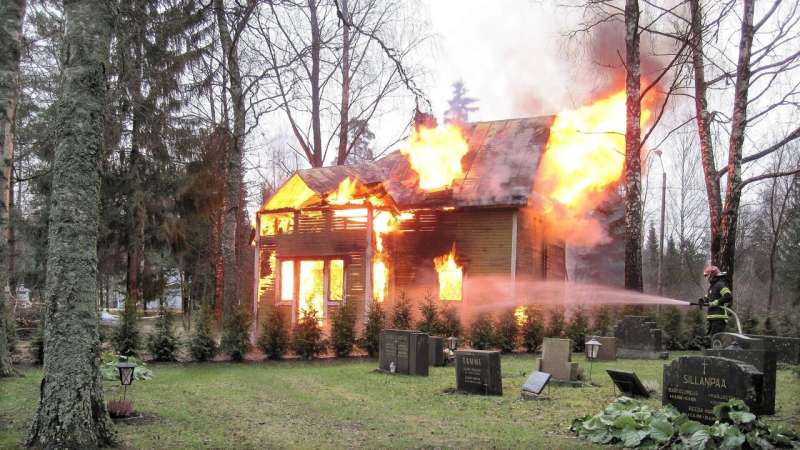This article has been reviewed according to Science X's editorial process and policies. Editors have highlighted the following attributes while ensuring the content's credibility:
fact-checked
trusted source
proofread
A new light on arc-faults: Enhancing electrical fire safety

An arc-fault is an electrical discharge between two conductors due to poor contact. These discharges cause sparks that can reach temperatures as high as 1000 degrees Celsius, making them one of the major causes of electrical fires. In the United States, the National Fire Protection Association (NFPA) estimates that 50 to 75 percent of all electrical home fires are a result of arc faults. Arcing can occur even in home appliances that operate at lower voltage levels making the swift detection of an arc-fault is essential for improving electrical fire safety.
A widely used circuit for detecting arc-faults is the arc-fault circuit interrupter, which cuts off power upon recognizing the distinctive waveform of low-voltage arc-faults. However, it can cause accidental tripping as some electrical appliances generate a waveform similar to that of a low-voltage arc fault.
To enhance the accuracy of arc fault detection, Professor Yoshikazu Koike at Shibaura Institute of Technology, Japan, along with Mr. Sittichai Wangwiwattana, who is currently a lecturer in University of the Thai Chamber of Commerce (UTCC), has been exploring the root causes of arc faults.
In their earlier research, the team constructed a physical circuit consisting of copper oxide bridges and found that arc-faults occur exclusively between copper or copper-based conductors at temperatures of 500 Celsius. For non-copper conductors, instead of observing arc faults, they noted a red glow due to the generation of heat.
"We concluded that in alternating current systems, the arc itself is not a gap-jumping electrical arc between two conductors but rather an advanced glowing connection state that occurs exclusively in copper-based connections," explains Mr. Wangwiwattana.
This glowing phenomenon introduces a small variable resistance, leading to a peak-to-peak voltage difference between stages with and without the glowing phenomenon. However, there was a lack of theoretical simulations to support their hypothesis.
Now, with new data, the researchers have successfully simulated the arc-fault state observed in their previous experiments. The findings published in the IEEE Transactions on Consumer Electronics can lead to novel and more accurate ways to detect arc faults in low-voltage alternating current systems.
In their experimental setup, the arc fault occurred when the copper oxide bridge burned at high temperatures, causing it to transform into an insulator and create a loop in the conducting path. The researchers simulated this phenomenon in a model that included a glowing/arc-fault simulation block, a current transformer simulation block, and a measurement block.
When they compared the results, the current and voltage waveforms in the simulations closely matched their real-world experiments at different load values of 12, 25, and 100 Ohms. Notably, a unique 'current shoulder' waveform appeared in arc-faults with copper contacts. The researchers believe that the current shoulder is due to the copper oxide bridge sustaining the arc-fault state before the initial spark. Detecting this current shoulder can be the key to identifying arc-faults.
The current shoulder was most prominent when the power draw was low. As the voltage difference between arc-fault and non-arc-fault states causes changes in the magnetic flux of the transformer, the current shoulder could be effectively detected by a current transformer. This is useful for catching arc faults early and has the potential to reduce the risk of fires and improve overall safety.
"Current Transformer used for current detection was found to be effective for low-voltage electrical fires caused by arc fault, also known as contact heating in Japan, that occur from 100 V to 200V. We believe that this achievement will greatly contribute to the prevention of low-voltage electrical fires, which are expected to increase in the future," concludes Prof. Koike.
More information: Sittichai Wangwiwattana et al, In-Depth Simulation of Low-Voltage AC Arc-Fault and Saturated Transformer Fault Detection System, IEEE Transactions on Consumer Electronics (2023). DOI: 10.1109/TCE.2023.3324637



















